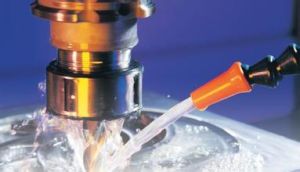What is cutting fluid?
The cutting fluid is used to reduce the cutting force generated in the metal cutting process and take away the heat generated during cutting to achieve the effect of reducing the temperature, thereby improving the durability of the tool, which also helps to improve production efficiency and improve the workpiece surface roughness.






















































